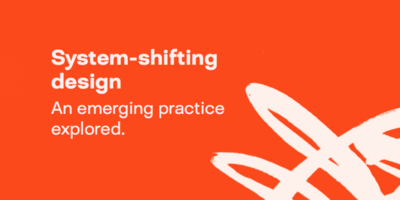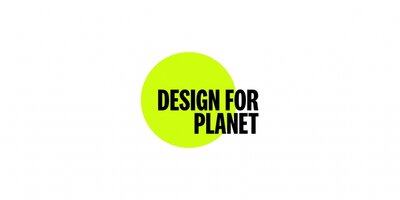Design Methods Step 1: Discover
This four-part guide is for anyone who wants to understand the methods designers use and try them out for themselves.
We’ve grouped 25 design methods into four steps – Discover, Define, Develop and Deliver – based on the stages of the Double Diamond, the Design Council’s simple way of mapping the design process.
From rapid prototyping to personas and surveys, methods like these are used all the time in our work with partners. Browse through our case studies to see how they have been instrumental in bringing about dramatic improvements to products, services and environments, ensuring they are clearly focused on the needs of users.
Creating a project space
What is it?
Creating a dedicated area to organise project materials, work and meet.
What is it useful for?
Creating a project space can help you make sense of large amounts of information, keep it organised, give your project visibility and communicate the story of your project to others.
How can I do it?
Find – or make – a dedicated project zone. You could use the area around your desk, a corner of your studio or, if you have the space, a separate room. Use the walls to organise your research spatially.
Hold all your meetings and creative sessions in this space so you are surrounded by stimuli.
Use the space to construct a story about your project so that you can share it with others and invite them to contribute.
Try not to be too precious or perfectionist about the way you present your work as people are more likely to make constructive comments on work in progress than something that looks polished.
As the project progresses, you can reorganise the space to tell the relevant story for the stage of the project.
Make the space comfortable to work in with appropriate lighting, sofas and tables as appropriate – and make it fun.
Observation
What is it?
Watching people as they interact with products, services and environments and identifying areas where problems occur.
What is it useful for?
Depending on your project, you might want to make general observations of something that already exists. For example, how people move around a shopping centre, or how people in the street use their mobile phones. Or you could test a design in a specific scenario.
How can I do it?
Pick your scenario and record your observation with photos or video. This lets you analyse the material after the event (and even catch important details you might have missed, like the expressions on people's faces). The photos or videos can also provide evidence to show to partners or stakeholders in your project.
User diaries
What is it?
Supplying users with diaries or asking them to record pictures, video or audio.
What is it useful for?
Gaining insight into the lives of your users, particularly patterns of behaviour.
How can I do it?
Supply users with a diary and ask them to keep a written record of their impressions, circumstances and activities related to the relevant aspects of their lives. The diary can be kept over a week or sometimes longer. Be careful not to ask leading questions that will distort the results you get: keep your questions open-ended and your language simple.
Giving your users cameras or asking them to record pictures, video or audio on their phones can be an effective way to get users to record important incidents and their environment.
Photo diaries can be used in conjunction with a written diary or as a stand-alone piece of evidence. But even if they're as simple as pictures of users' houses, or the contents of their fridges, they still provide valuable insights into users' habits.
You could provide a pre-printed notebook or diary with prompts or questions, making sure the visual design makes it easy to complete.
It can often be worth talking through the diary in a follow-up interview.
Being your users
What is it?
A method to put yourself in the position of your user.
What is it useful for?
Building understanding of and empathy with the users of your product, service or environment.
How can I do it?
Identify your target user group, then carry out research to identify user scenarios and typical tasks users undertake.
Put yourself in the user's situation for a couple of hours, a day or even a week. Carry out the tasks that they would do, in the environments where they would do them. This could mean, for example, working on a supermarket checkout or driving an unfamiliar car for a week. Make detailed notes or keep a diary to record your thoughts.
You could also use empathy tools to simulate specific user characteristics. For example, wearing gloves and tinted glasses can simulate some of the physical effects of old age, or a pregnancy suit with a weighted 'bump' can simulate what it would be like for a pregnant woman to use your service.
Brainstorming
What is it?
Brainstorming is a method to enable a team to work together to generate ideas quickly and effectively.
What is it useful for?
Generating ideas quickly in response to a problem.
How can I do it?
Start with a warm-up. Brainstorm a fun problem such as "How can we get every Monday morning off work?"
State the problem clearly and concisely.
Don't lose anything. Write your ideas on flipcharts, or on the wall.
Number your ideas and set a target – to get to 100, for example.
Keep the focus sharp: edgy and precise statements are better than fuzzy ones.
Keep the ideas flowing, be responsive and keep trying to approach the problem from different viewpoints.
Brainstorming will be most effective if you keep to these ground rules:
- Defer judgment – build on ideas to make them better
- Don't criticise!
- One conversation at a time
- Go for quantity – the more ideas the better
- Have wild ideas – every idea is valid
- Stay focused on the problem in hand
- Be visual – draw ideas or represent them with whatever is to hand
After brainstorming, a smaller group can cluster the ideas for voting.
Choosing a sample
What is it?
Choosing a sample helps you find the most appropriate or effective group of users to recruit to make the most of limited time and budget.
What is it useful for?
It's not possible to research each and every one of your users. Plus, creating a sample is the first step for many methods of understanding users, including one-to-one interviews and focus groups.
How can I do it?
Start by brainstorming the user attributes that you think influence behaviours in relation to your project. Then choose the most important attributes to determine a useful range of people to study.
For example, if you were designing a bike for female commuters you might want to study people who commuted by different means (train, car, bus) and in geographical areas with different weather, as well as people of different size and strength.
Other common attributes to consider might be age, life stage, ethnicity and socio-economic background, as well as emotional characteristics or attitudes.
Be wary of speaking to more people than you have time to analyse. There is a trade-off between the number of people you speak to and the number of insights you will get. Often a sample of six to nine people will be enough.
Remember, your sample doesn't have to be representative. In fact, talking to non-representative or extreme users will often yield the most insight and inspiration for your project.
For example, if you were designing a bike for commuters you might want to include a cycle courier in your sample. And don't make the mistake of only talking to people who use your products or services – speak to those who don't use them too. For example, beyond talking to people who love commuting by bike, include those who have tried it and hated it as well as those who love commuting by car. Always be mindful of whom you haven't met.
The sample you choose will depend on what you are trying to get from your users. If you are researching to identify opportunities, a diverse sample including extreme users can often yield the best results. If you are researching to validate a resolved design (for example in a focus group) then a more representative and less diverse sample may be more appropriate.
Quantitative surveys
What is it?
Surveys which generate statistical data about your chosen sample of the population.
What is it useful for?
Understanding the big picture and providing you with statistics that can help to inform the direction of your project.
How can I do it?
There are two types of quantitative surveys:
- Omnibus surveys are regular monthly surveys that allow you to place a set number of questions on a shared questionnaire with content from several organisations. This is the cheaper option but limited in scope.
- Ad hoc surveys are bespoke pieces of work and allow you to ask as many questions as you need.
Both of these could involve commissioning a specialist market research agency. It's best to look for one familiar with the territory so that they will produce a usable report that directly responds to the needs of the project. Don't forget – the information you need may already be available on the web or at a reference library.
Fast visualisation
What is it?
Generating quick sketches of your ideas.
What is it useful for?
Visualising ideas will make them easier to understand and modify, and will in turn stimulate new ideas.
How can I do it?
Sketch ideas during a group brainstorm. The drawings don't need to be perfect: they only need to have just enough detail to communicate the idea.
Secondary research
What is it?
Setting aside time to explore a range of published information about your customers, your competitors and political, social and economic trends.
What is it useful for?
It’s vital to explore and understand the context you’re working in and to stay up to date with the latest developments.
How can I do it?
Search online or at your local reference library (where you can ask for help). Services like Google Alerts allow you to receive automated updates about new articles in your area of interest as they are published.
Hopes and fears
What is it?
A way of getting everyone involved in a project or workshop, designers and non-designers alike, to express their hopes and fears out loud.
What is it useful for?
Setting expectations to establish from the outset which hopes and which fears the project can and can't address.
How can I do it?
Ask the gathered team for their hopes and fears, write them down on separate sheets of paper and pin them up as a reminder to be revisited throughout the workshop. Discuss the outcomes of the exercise and establish from the outset which ones the project can address.
Next steps
Subscribe to our newsletter
Want to keep up with the latest from the Design Council?



